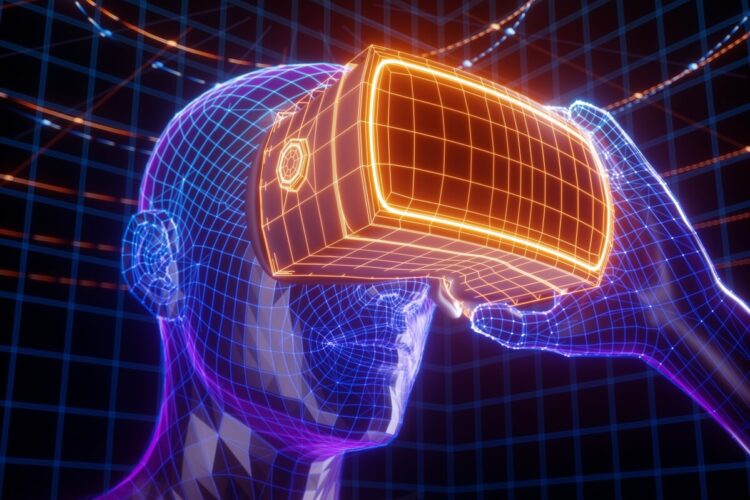The term “Metaverse” has become a buzzword, often conjuring images of virtual reality games and digital avatars in fantastical worlds. While gaming is undeniably a powerful entry point, it represents only a fraction of the Metaverse’s true potential. Far from being a niche for entertainment, the Metaverse is rapidly evolving into a new, parallel digital realm poised to revolutionize our social interactions, redefine how we work and learn, and fundamentally change economies. It is a persistent, shared, and immersive virtual space where the digital and physical worlds converge, creating unprecedented opportunities and challenges. The future of the internet is not a 2D experience on a screen; it is a 3D, interconnected universe that we will inhabit, and its applications extend far beyond a simple game.
This comprehensive guide will take a deep dive into the most significant developments in the Metaverse beyond its role in gaming. We’ll explore its transformative potential in business, education, healthcare, and social connection, and we’ll examine the critical technologies and ethical considerations that must be addressed for this new digital frontier to flourish. By the end, you will have a clear understanding of why the Metaverse is not just a trend but a powerful and transformative force that will redefine our lives for generations to come. The era of the Metaverse is here, and it’s richer, more complex, and more impactful than you can imagine.
A. The Pillars of the Metaverse Beyond Gaming

To understand the Metaverse’s broader implications, we must first break down its core components as a new digital reality. It is a fusion of several key technologies and concepts that, when combined, create a persistent and interconnected virtual world.
- A. Virtual Reality (VR) and Augmented Reality (AR): These are the primary gateways to the Metaverse. VR creates a fully immersive, computer-generated environment, while AR overlays digital information onto the real world. A doctor might use a VR headset to perform a virtual surgery, while a shopper could use an AR app on their phone to see how a new piece of furniture looks in their living room. These technologies are the foundation of the immersive experience.
- B. Persistent and Shared Spaces: Unlike a video game that ends when you log off, the Metaverse is a persistent and shared space. It exists 24/7, and what you do in it remains there, just like in the real world. A virtual office meeting in the morning could be followed by a social event in the same digital space in the evening. This persistence is a key feature that makes the Metaverse a real destination.
- C. The Digital Economy: The Metaverse will have a fully functioning economy, with its own currencies, assets, and marketplaces. You can buy and sell virtual land, digital clothing for your avatar, and even digital art. This economy is powered by blockchain technology and non-fungible tokens (NFTs), which provide a secure way to track ownership and value.
- D. The Digital Identity: In the Metaverse, you will have a persistent digital identity, a virtual avatar that represents you. This avatar is not just a character in a game; it is your digital self. It can be customized to reflect your personality, your style, and your profession. This identity will be a key part of your social and professional interactions in the Metaverse.
B. Transforming Business and Commerce
The Metaverse is poised to revolutionize how we work, shop, and build businesses. It will create new forms of commerce, new ways of collaboration, and new opportunities for companies to connect with their customers in a deeply immersive and personal way.
- A. The Virtual Office and Collaborative Workspace: The pandemic accelerated the trend toward remote work, but the Metaverse takes it to a new level. A company can create a virtual office where employees can collaborate in a 3D space, interacting with each other’s avatars, whiteboards, and digital projects as if they were in the same room. This can improve communication, creativity, and a sense of community for a remote workforce.
- B. Virtual Showrooms and Retail: For brands, the Metaverse is the ultimate virtual showroom. A car company can create a digital replica of its new model, allowing customers to walk around it, customize it, and even take a virtual test drive. A fashion brand can create a virtual store where shoppers can try on digital clothing for their avatars. This creates a new and exciting way for brands to showcase their products and for customers to shop.
- C. The Rise of “Metacommerce”: Metacommerce is a new form of commerce that is native to the Metaverse. It includes the buying and selling of virtual goods, services, and land. A digital architect can be commissioned to design a virtual home, a digital artist can sell a painting that only exists in the Metaverse, and a real estate developer can sell a virtual plot of land. This creates an entirely new economy with its own rules and opportunities.
- D. Immersive Training and Simulation: The Metaverse is a perfect platform for training and simulation. A manufacturing company can train its employees on a new piece of machinery in a virtual environment without the risk of a real-world accident. A pilot can practice flying a plane in a highly realistic virtual cockpit. This can save companies time and money, and it can improve the quality of the training.
C. Revolutionizing Education and Healthcare
The Metaverse is not just for business and commerce; it is also a powerful tool for education and healthcare. It can make learning more engaging, and it can make medical care more accessible and personalized.
- A. Immersive Education: The traditional classroom is a 2D experience. The Metaverse can make education a 3D, immersive one. A student can take a virtual field trip to the Roman Colosseum, they can explore the human body from the inside out, or they can travel back in time to witness a historical event. This can make learning more engaging, more memorable, and more effective for a new generation of students.
- B. The Virtual University: A university can create a virtual campus where students can attend lectures, meet with their professors, and collaborate on projects, no matter where they are in the world. This can make higher education more accessible to a global audience and can reduce the cost of a traditional degree.
- C. Remote Healthcare and Therapy: A patient can have a virtual consultation with a doctor in the Metaverse, allowing them to receive a diagnosis and a treatment plan from the comfort of their own home. A therapist can use a virtual environment to help a patient with anxiety or PTSD. The Metaverse can make healthcare more accessible and more personal for people in remote areas or for those who have difficulty traveling.
- D. Medical Simulation and Training: A medical student can practice a complex surgery on a virtual patient in the Metaverse without the risk of a real-world mistake. A surgeon can use a VR headset to plan a complex operation, and they can even use a virtual environment to collaborate with a colleague from a different part of the world. This can improve the quality of medical care and can reduce the risk of a medical error.
D. The Challenges and Ethical Considerations

The Metaverse is a powerful and transformative force, but it also presents significant challenges and ethical considerations that must be addressed for it to flourish. These are not just technological problems; they are profound societal questions.
- A. Data Privacy and Security: The Metaverse will collect vast amounts of personal data, from your location and your movements to your biometric data and your emotional state. This data is a valuable asset, and it must be secured from hackers and protected from malicious actors. The privacy of this data is a major concern that must be addressed with clear regulations and a commitment to transparency.
- B. Digital Harassment and Safety: The Metaverse is an open, shared space, and it will be home to both good and bad actors. It will be a place where digital harassment, bullying, and abuse can occur. A clear and effective system for moderating the space and for protecting users from harm is a non-negotiable requirement for the future of the Metaverse.
- C. Accessibility and Digital Divide: The Metaverse will require expensive hardware, such as a high-end computer and a VR headset. This could create a new digital divide, where the Metaverse is only accessible to a privileged few. A clear and consistent effort must be made to make the Metaverse more accessible to everyone, regardless of their income or their location.
- D. The Real vs. the Virtual: As the Metaverse becomes more immersive and more integrated into our lives, the line between the real world and the virtual world will begin to blur. This could lead to a variety of social and psychological issues, from addiction to a sense of detachment from the real world. A clear and open conversation about these issues is a crucial step toward a healthy and sustainable Metaverse.
Conclusion
The Metaverse is far more than a virtual playground for gamers; it is a new frontier of human experience, a persistent and interconnected digital world that is poised to redefine our lives. It is a powerful and transformative force that is revolutionizing how we work, learn, and connect with each other. From the immersive virtual office to the global classroom, the Metaverse offers a new level of collaboration, accessibility, and engagement that was once unimaginable. While the challenges of data privacy, security, and digital harassment are significant, they are not insurmountable. They are simply the next set of hurdles that we, as a society, must overcome to build a better, more equitable, and more sustainable digital world.
The most successful and lasting applications of the Metaverse will be those that address real-world problems and that are built with a focus on a positive and meaningful human experience. It’s not just about creating a new world; it’s about creating a better one. The future of the internet is not a 2D experience on a screen; it is a 3D, interconnected universe that we will inhabit, and its applications extend far beyond a simple game. The Metaverse is a testament to the fact that innovation is a continuous process, and that the drive for a more connected, more immersive, and more personal world is a powerful and transformative force. By embracing the Metaverse, we are not just changing how we interact with technology; we are changing what it means to be human. The journey is just beginning, and the possibilities are endless.












